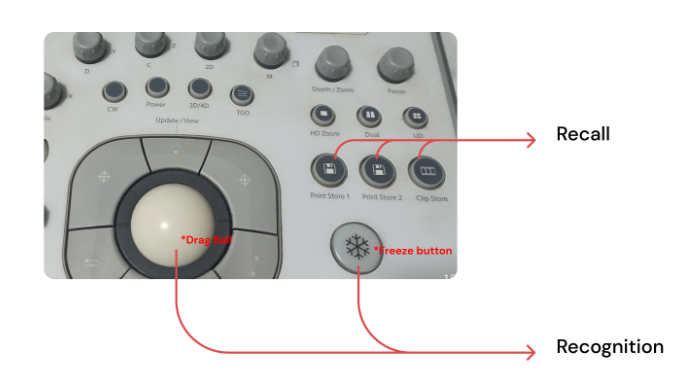In summary
Recall is like trying to remember something without any help, while recognition is like picking out the right answer when you see it.
Activation of Content in Memory
Think of your memory like a collection of organized chunks, each representing a piece of information. These chunks vary in how easily they can be recalled, which psychologists measure as their activation level.
For instance, your own name is a highly activated chunk. If someone suddenly asked you for it, you'd likely recall it quickly, even if you were half-asleep. But recalling the name of your first-grade teacher might be trickier because its activation is lower.
Several factors affect a chunk's activation:
- Practice: The more you've used a chunk in the past, the higher its activation.
- Recency: If you've recently used a chunk, its activation tends to be higher.
- Context: What you're currently focusing on can affect the activation of chunks in your memory.
Practice
Let's consider the example of riding a bicycle. When we first learned to ride a bicycle, it was a while ago, and we practiced consistently. Now, even if we haven't ridden a bicycle in a long time and switch to riding a motorcycle, if we were to take the bicycle for a spin again, we could still ride it smoothly without any issues. This ability stems from our extensive practice.
Recency
Take, for instance, the latest movie you watched, such as "Kung Fu Panda 4". We all know the main character, Po the panda, quite well. However, if someone asked you about the villain's name, "Chameleon", last year when the movie wasn't on your radar, you might not have known. But now, after watching the movie recently, the name "Chameleon" easily comes to mind because it's fresh in your memory. This demonstrates the impact of recency on memory activation.
Context
Imagine yourself in a cricket stadium, absorbed in the excitement of a live match. Your surroundings and the game unfolding in front of you create a context centered around cricket. As you cheer for your favorite team and follow each play, your memory activates cricket-related information. This could be memories of past matches, knowledge about player statistics, or memorable moments from previous cricket games. In this cricket-centric context, your memory is more likely to recall cricket-related memories, enriching your experience of the game.
Recall in User Interfaces
Recall in user interfaces denotes the user's capability to retrieve specific information or perform a task from memory autonomously, without external assistance or cues. It encompasses the process of summoning previously acquired knowledge or actions and applying them to the ongoing context within the interface.
A prime example of this concept is evident in the retrieval of login credentials. Users exhibit recall by recollecting their username and password to gain access to an online platform.
Application in the Medical Sector
Within the medical, professionals undergo extensive training, encountering numerous patients and accumulating vast expertise. This immersive experience cultivates robust recall abilities, notably evident in tasks such as prescribing drug dosages.
An illustrative instance of recall in the medical domain is observed among radiologists and other imaging specialists. They proficiently recall anatomical structures, pathological findings, and diagnostic criteria when interpreting medical images such as X-rays, MRIs, or CT scans.
Recognition in User Interfaces
Recognition in user interfaces pertains to the user's adeptness in identifying or selecting the correct option when confronted with a range of choices or prompts within the interface. Unlike recall, which involves retrieving information from memory sans external assistance, recognition relies on the user's capability to acknowledge familiar options or elements within the interface.
Application in the Medical Sector
The Significance of Buttons in Medical Devices
In medical devices, buttons play a crucial role. For instance, in ultrasound machines, the keyboard features buttons like "freeze" and "drag ball," which are essential components recognized and utilized for specific situations.
Recognition in Telemedicine
In telemedicine consultations, healthcare providers demonstrate recognition by identifying patients' identities and medical histories. This information is accessed from electronic health records or virtual patient profiles displayed during telehealth visits, either through video conferencing platforms or dedicated telemedicine software.
UI Memory Recognition
Visual Cues
Incorporating distinctive visual elements such as icons, colors, or symbols to represent different functions or categories within the interface can aid in memory recognition. For instance, using a red cross symbol for emergency features or a green checkmark for completed tasks can help users quickly recognize and recall their intended actions.
Clear and Concise Labeling: Using clear and concise labels for buttons, menus, and navigation elements can aid in memory recognition. Descriptive labels that accurately represent the function or purpose of each element can help users remember the actions associated with them.
Contextual Reminders: Incorporating contextual reminders or prompts within the interface based on user actions or time-sensitive tasks can help users remember important actions or information. For example, displaying reminders for upcoming appointments or medication schedules.
Customizable Preferences: Allowing users to customize their interface preferences, such as layout, color themes, or frequently accessed features, can enhance memory recognition by aligning the interface with their individual preferences and usage patterns.
Search and Filter Functionality: Implementing robust search and filter functionality within the interface can aid in memory recall by allowing users to quickly locate specific information or features, even if they don't remember the exact location within the interface.
By incorporating these memory recognition and recall strategies into the design of medical user interfaces, developers can create interfaces that are more intuitive, efficient, and user-friendly, ultimately enhancing the overall user experience.












Top comments (0)